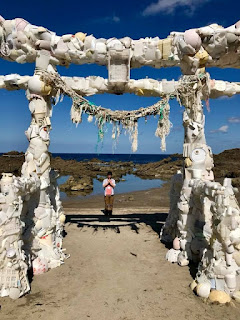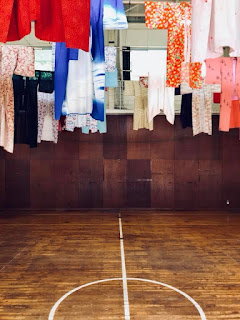Author Archives: RCS Admin
A Brexit Agricultural Policy in the Making?
Letter from the East: On Impact
The sea looked calm; the Pacific, I thought, the greatest irony of all. The construction has also involved tsunami sea walls, on and off shore. With their 7-8 metre height by the coastline, they look aggressive – it was not a surprise hear that the communities oppose them. It is not just about blocking the horizon, they block their own understanding of what these communities ‘are’, what these communities ‘do’.
All commercial shops in the village were destroyed, there is debris on the land. ‘Be careful where you are walking’, he said. The market is an actual point of community-in-the-making as we like to think in social sciences. And it really is. I saw people sharing news, joking, hugging. We had a meeting afterwards about how the market went and how they can improve it in future. They asked for my opinion. I was formally invited back at the New Year’s Eve party, but I made them promise that they wouldn’t ask me to chop wood – again. My rural skills have their limits. We settled for sake.
Farming, bird watching, beluga whales and didgeridoos at the New Networks for Nature Gathering 2017
Letter from the East: Academic out of water

The price of fish

Involving smallholders as partners in research could make all the difference to their development
In our CRE blog Mark Reed and Lindsay Stringer call for a shift in how we carry out and focus research in the world’s drylands.
 Interventions have been tried before, of course. Generally development efforts have been spearheaded by a range of international groups, investing in large-scale, top-down projects and programmes, aiming to manage things like soil structure, soil fertility and water availability through irrigation. More recently there has been more of a systems-based approach to tackle these issues, looking at everyone involved, all the core environmental processes, and how it all interacts. Smallholders are vital cogs in this system, driving development. They are central to food security, generating employment and contributing a significant percentage of Gross Domestic Product in many drylands. Improving the benefits from and profitability of smallholder farming remains an urgent challenge for the international community. How to do this has been a moot point. We argue that the time for top-down solutions is over and a totally new approach and research agenda is needed, one that emphasizes complexity, interactions, trade-offs and working with affected populations to jointly address dryland development.
Interventions have been tried before, of course. Generally development efforts have been spearheaded by a range of international groups, investing in large-scale, top-down projects and programmes, aiming to manage things like soil structure, soil fertility and water availability through irrigation. More recently there has been more of a systems-based approach to tackle these issues, looking at everyone involved, all the core environmental processes, and how it all interacts. Smallholders are vital cogs in this system, driving development. They are central to food security, generating employment and contributing a significant percentage of Gross Domestic Product in many drylands. Improving the benefits from and profitability of smallholder farming remains an urgent challenge for the international community. How to do this has been a moot point. We argue that the time for top-down solutions is over and a totally new approach and research agenda is needed, one that emphasizes complexity, interactions, trade-offs and working with affected populations to jointly address dryland development.Language, the City and the Rural: Future Perfect
From snow to sun – rural growth in the European Union
-
Building on Natural and Cultural Resources: The Importance of Place
-
Enterprise, Partnership and Diversification: Innovation and Incubation
-
Providing Recreation and Amenity: Providing Authentic Rural Experiences











